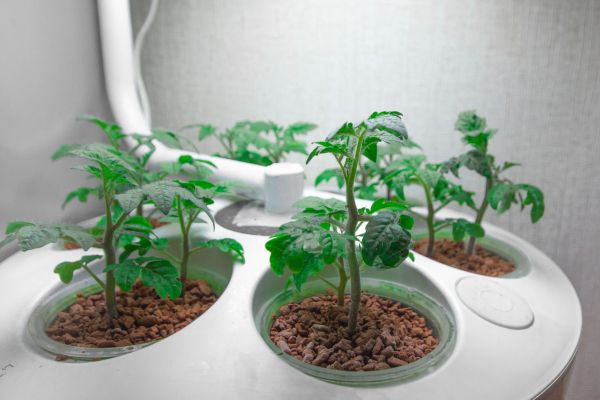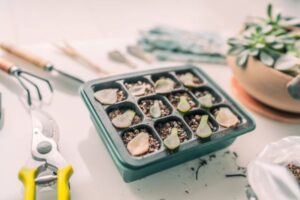Indoor plants, with their verdant allure and ability to transform living spaces into tranquil sanctuaries, have become an integral part of modern interior design. The allure of nurturing these green companions has captivated plant enthusiasts and novices alike. However, for these botanical wonders to thrive and blossom, proper care and attention are essential. Among the most critical aspects of indoor plant care is fertilization, a process that provides plants with vital nutrients they may not obtain from their limited indoor environment.
Fertilizing indoor plants is akin to nourishing the very soul of these living organisms. Just as humans require a balanced diet to thrive, plants also need a steady supply of essential nutrients for their well-being and growth. The significance of fertilizing indoor plants goes beyond aesthetic appeal; it directly impacts their vitality and ability to adapt to their indoor habitat. In this comprehensive guide, we will delve into the depths of indoor plant fertilization, exploring the rationale behind its importance, the optimum timing for application, the various fertilization techniques, the nuanced nutrient requirements of different plant species, and the contrasting benefits of organic and synthetic fertilizers.
As we embark on this horticultural journey, we will uncover the secrets to fostering a thriving indoor garden that flourishes with vibrant foliage and stunning blooms. By arming ourselves with knowledge and understanding the symbiotic relationship between plants and their nutrients, we can cultivate an indoor oasis that not only elevates our living spaces but also nurtures our souls and rejuvenates our connection with nature. Join us as we unravel the mysteries of fertilizing indoor plants, revealing the transformative power of this essential practice in creating a harmonious coexistence with the plant kingdom within the confines of our homes.
The Importance of Fertilizing Indoor Plants
Indoor plants rely solely on the nutrients present in their potting soil, which can become depleted over time. Fertilizers play a vital role in replenishing these nutrients and maintaining plant health. They provide essential elements such as nitrogen, phosphorus, and potassium (N-P-K), along with micronutrients like iron, magnesium, and calcium. These nutrients support various plant functions, including photosynthesis, root development, and overall growth.
Fertilizers also enhance a plant’s resilience to environmental stressors and diseases, making them more capable of thriving indoors. Regular fertilization can significantly improve the appearance of indoor plants, leading to lusher foliage, vibrant blooms, and a generally healthier plant.
When to Fertilize Indoor Plants
Determining the right time to fertilize indoor plants is crucial to avoid overfeeding or starving them of nutrients. In general, active growth periods are the best times to fertilize. For most indoor plants, this growth phase occurs during the spring and summer months when they experience more daylight and warmth. During this period, plants are more receptive to nutrient uptake and can utilize the added fertilizer effectively.
However, it’s essential to note that not all indoor plants follow the same growth patterns. Some plants, like those that go dormant during winter, require little to no fertilization during this period. Researching the specific needs of each plant species is essential to provide the best care.
How to Fertilize Indoor Plants
Fertilizing indoor plants correctly involves understanding the various types of fertilizers and application methods. There are three primary types of fertilizers: liquid, granular, and slow-release pellets. Liquid fertilizers are quick-acting and are usually diluted with water before application. Granular fertilizers are sprinkled on the soil surface and release nutrients gradually when watered. Slow-release pellets are incorporated into the soil and dispense nutrients over an extended period.
Before fertilizing, always check the label instructions on the fertilizer packaging for proper dilution or application rates. Over-fertilization can lead to nutrient imbalances or even burn the plant’s roots. It’s crucial to water the plant before applying the fertilizer to avoid root damage.
Understanding the Nutrient Needs of Indoor Plants
Different indoor plants have varying nutrient requirements, and understanding these needs is essential for successful fertilization. Foliage plants, such as pothos and philodendrons, require balanced fertilizers to support healthy leaf development. Flowering plants, like African violets and orchids, benefit from fertilizers with a higher phosphorus content to encourage blooming.
It’s important to adjust the fertilizer regimen based on the plant’s growth stage. Young plants, for instance, need less frequent fertilization compared to mature ones. Additionally, during the dormant winter months, many indoor plants require reduced fertilization or none at all.
Organic vs. Synthetic Fertilizers for Indoor Plants
Indoor gardeners can choose between organic and synthetic fertilizers to nourish their plants. Organic fertilizers, such as compost, fish emulsion, and seaweed extracts, are derived from natural sources and contain a range of nutrients. They release nutrients slowly and improve soil structure, but their nutrient composition may vary.
On the other hand, synthetic fertilizers are chemically formulated to provide specific nutrient ratios. They act quickly and deliver precise amounts of nutrients to the plants. However, their overuse can lead to salt buildup in the soil over time, affecting plant health.
Conclusion
In the pursuit of cultivating a thriving indoor garden, we have uncovered the vital role that fertilization plays in the well-being and prosperity of our beloved indoor plants. Through this journey, we have come to understand that the act of fertilizing indoor plants is not merely a routine task but a profound responsibility – a connection to the life force that sustains these green companions and enriches our own lives.
The importance of fertilizing indoor plants extends beyond superficial aesthetics. It is an act of nurturing and supporting the very essence of life that thrives within the plant kingdom. By providing the essential nutrients they need, we empower our indoor plants to fulfill their innate potential, gracing us with their lush foliage, captivating blooms, and refreshing air-purifying abilities.
As we explored the ideal timing for fertilization, we learned the significance of being attuned to the natural growth cycles of our plants. The spring and summer months become a time of celebration, as we seize the opportunity to bolster our plants’ growth during their active phase. Conversely, the winter months become a period of rest and rejuvenation, where we exercise restraint, allowing our plants to replenish themselves in preparation for the next season of growth.
Understanding the diverse array of fertilization methods has armed us with the tools to choose the most appropriate approach for our indoor plants’ specific needs. Whether it be liquid fertilizers for rapid nutrient absorption, granular fertilizers for gradual release, or slow-release pellets for long-lasting nourishment, we are equipped to provide tailored care that ensures optimal results.
Delving into the intricacies of nutrient requirements, we have recognized that each plant species possesses unique preferences, demanding a nuanced approach to fertilization. By acknowledging and adapting to these differences, we cultivate an environment where every plant thrives in its distinctive splendor, displaying its individuality in full bloom.
Lastly, the choice between organic and synthetic fertilizers reflects a conscious decision about the impact we wish to have on our indoor garden’s ecosystem. The nurturing touch of organic fertilizers fosters a harmonious relationship with the natural world, while synthetic fertilizers offer precision and efficiency in nutrient delivery. Striking a balance between these options allows us to cultivate a holistic indoor garden that not only flourishes aesthetically but also sustains its well-being in a manner that resonates with our environmental ethos.
As we conclude this journey through the intricacies of fertilizing indoor plants, we embrace our newfound roles as plant stewards and custodians of nature’s grace within our homes. By nurturing our indoor plants with care and knowledge, we partake in the timeless rhythm of life – a dance of coexistence between humans and the plant kingdom. The vibrant greenery and blossoms that grace our living spaces are a testament to this communion, bringing us closer to nature’s profound wisdom.
Let us continue to tend to our indoor gardens with passion and dedication, savoring the connection we share with these living beings. Through fertilization, we not only nourish their roots but also enrich our own lives with the beauty and serenity they bestow upon us. As we breathe in the oxygen they produce and admire their verdant splendor, we are reminded of the interconnectedness of all life on Earth, and the boundless wonders that nature offers to those who seek to cultivate a deeper understanding of its mysteries.



